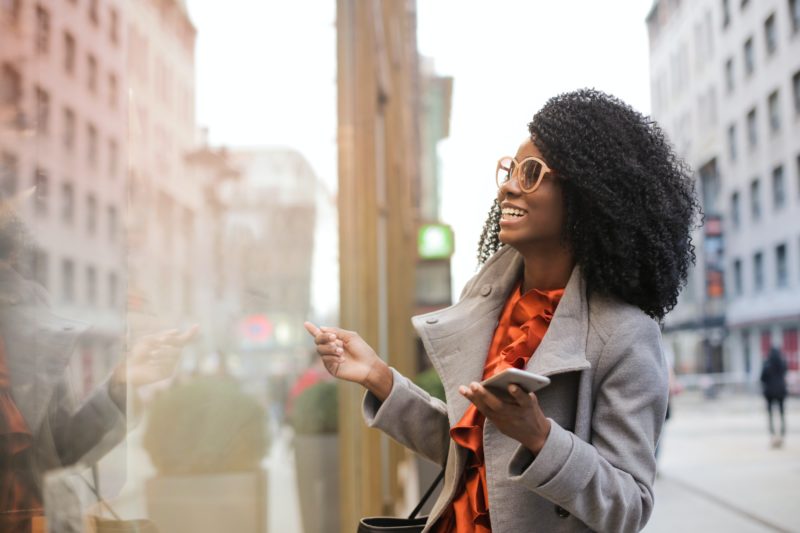The luxury tax assessed on Black women
Share
Explore Our Galleries
Breaking News!
Today's news and culture by Black and other reporters in the Black and mainstream media.
Ways to Support ABHM?
By Channing Hargrove, Andscape
We have to calculate a brand’s history even as we covet that new bag

The cost of luxury is higher for Black women.
Not because the actual price goes up when a Black woman walks into a designer boutique. But because Black consumers also have to add in the cost of a brand’s anti-Black history.
The way we adorn ourselves has what Mark-Evan Blackman, chair of the fashion design department at the State University of New York, Korea, calls a “citizen component.”
“That’s a calculation that people of color, and largely women of color, have to make regularly,” said Blackman. “Every other customer purchasing that garment, that piece, doesn’t have to worry about anything other than their bottom line.
“Our bottom line is multifaceted,” Blackman said. “It includes socioeconomic levels, the way your cousin was treated in the store when he walked in, lack of service, a snub. Our bottom line has to quickly calculate: ‘Is this what I want to do?’ realizing that we also want to look good. The pull of what got us into the store hasn’t diminished, although all these other factors might contribute to our decision.”
So often the weight of a brand’s wrongdoing lands on Black women, leaving us to add it to the calculation of whether our desire for a high-status item gives us status.
Start with the history. Brooks Brothers profited from outfitting enslaved people, their enslavers, and then Union soldiers during the Civil War. Designer Coco Chanel was a Nazi informant. Daimler AG, which makes Mercedes-Benz, used forced labor, including prisoners of war and concentration camp inmates, to build vehicles for the German military.
And it’s not like all of the white supremacy is in the distant past. Dolce & Gabbana, despite a history of racism and anti-gay bias, is still dressing Black celebrities for award shows. Balenciaga and Gucci, two brands that have incredible cultural currency with Black customers, have been called out repeatedly in recent years for appropriating or mocking Black culture.
[…]
This is a new dilemma for many Black women, who now have the disposable income and leisure to indulge in high-end, name-brand shopping. For their mothers and grandmothers, whose clothes shopping was mainly for necessities — back-to-school outfits, work uniforms, comfortable shoes to withstand a long workday — it was a straightforward calculation to determine whether the item was worth buying from a store that treated you poorly. Now, the moral calculus asks if you feel comfortable spending thousands of dollars on beautifully made things by a company that either is casually racist or has a sordid history.
“You can come home with something that someone is truly offended by,” said Blackman. “Aesthetically, you love it, and aesthetically they get it, they love it too. But they would never be seen wearing it.
“There is a new awareness of product, product history, the company’s history that one has to be armed with before they go and shop. That is everyone’s new reality, especially people of color.”
Hargrove dives into this topic.
Black fashion designers have struggled with racism in the industry, too.
Racism is a common topic covered in ABHM’s breaking news archive.











Comments Are Welcome
Note: We moderate submissions in order to create a space for meaningful dialogue, a space where museum visitors – adults and youth –– can exchange informed, thoughtful, and relevant comments that add value to our exhibits.
Racial slurs, personal attacks, obscenity, profanity, and SHOUTING do not meet the above standard. Such comments are posted in the exhibit Hateful Speech. Commercial promotions, impersonations, and incoherent comments likewise fail to meet our goals, so will not be posted. Submissions longer than 120 words will be shortened.
See our full Comments Policy here.